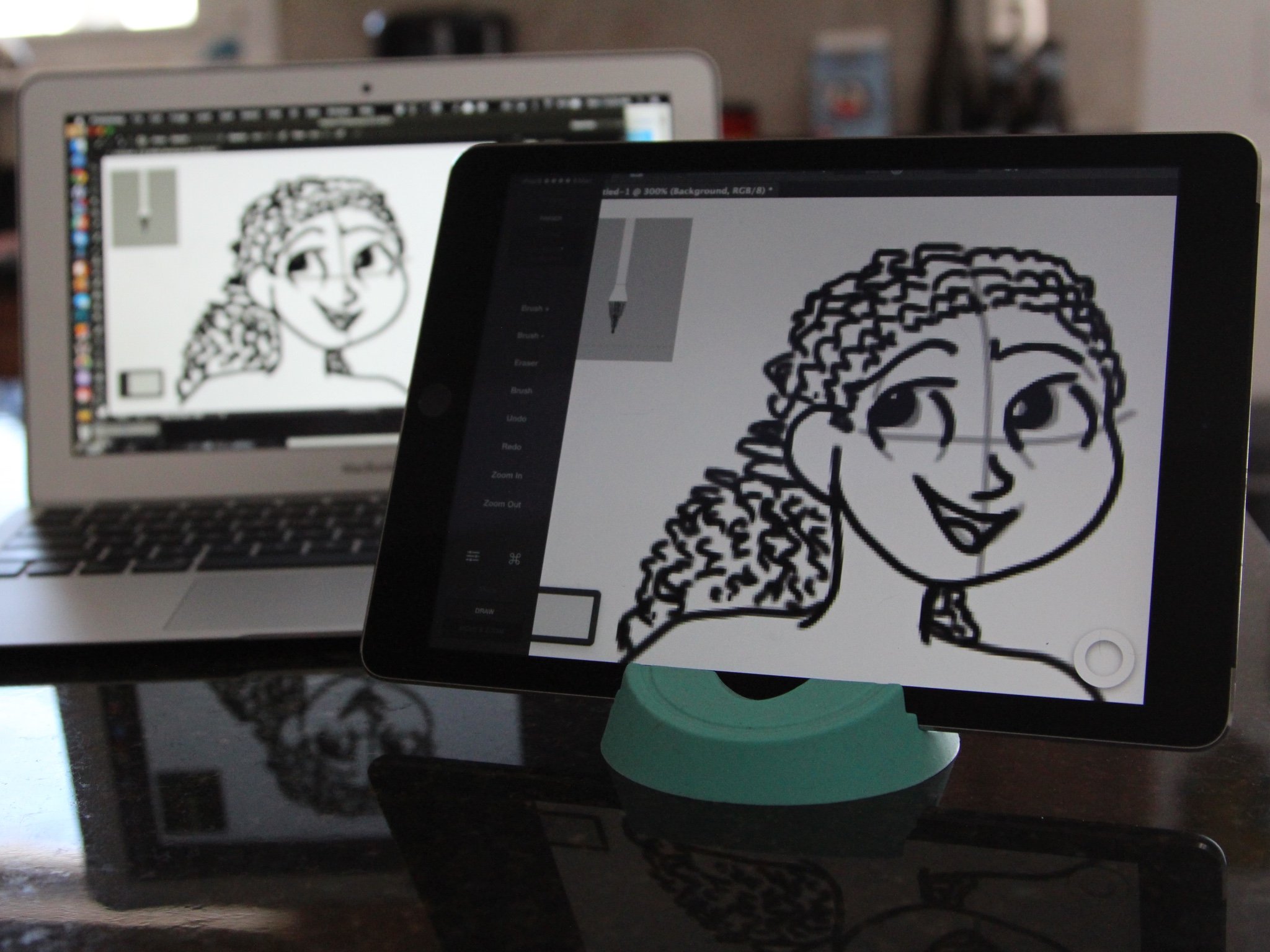The iPad's made great progress in the sketching world, but it's still been hampered by imprecise screen mapping and styluses that can't perfectly replicate pressure. The solution from Astro HQ's Astropad is to map the iPad to a different screen entirely — that of your Mac.
Astropad does for creative pros what Duet Display did for second-screen enthusiasts: Not only does it provide a high-quality, high-framerate mirrored display on your iPad that you can draw on, but Astropad goes a step further and integrates with three of the iPad's top-selling pressure-sensitive styluses to offer you full pressure support in your Mac app of choice.
It may not be a true Wacom Cintiq experience, but it sure comes close to fooling me.
When I first heard about Astropad, I took it with a fair grain of salt: mirroring a display on the iPad is hard enough already; mirroring wirelessly a step above that; and doing so at a framerate that doesn't impede creative professionals almost impossible. After all, before Astropad, I'd tried using Duet Display to sketch, and while it sort of worked, it clearly wasn't designed for creative pros.
Astropad is — and that makes all the difference.
The tech
The companion iPad and Mac apps get such impressive results thanks to Astro engineers Matt Ronge and Giovanni Donelli's Liquid technology, which they claim renders 2x faster than AirPlay and clearer than the highest-quality JPEG. Though I was skeptical reading this on paper, in practice I was blown away. Astropad feels seamless, with no lag or artifacting occurring during the drawing process.

Astropad does this by emphasizing sketching tools over traditional mirrored or second-screen display. There are two different modes: Draw and Move & Zoom; the former allows you to interact with either the screen or your canvas, while the latter is focused entirely on panning and zooming the selection of your screen you've chosen.
When in Move & Zoom mode, the screen intentionally artifacts and drops transparency, assuming that you're readjusting your canvas rather than truly needing to do much else with the screen. (Presumably, that's what your Mac is for.) Moving windows in Draw mode, too, produces temporary artifacting and rendering — but it's done on a per window basis, so you can move parts of your screen freely without worrying about delayed frame rates covering up the screen.

Drawing, though, never has artifacting. It's done smoothly, with no lag or pixel offset, and you can use either your finger, a capacitative stylus, or one of three supported pressure-sensitive options (Wacom's Creative Stylus, Adonit's Jot Touch, and the Jaja Hex3, with support for FiftyThree's Pencil coming soon).
And that's all on a wireless connection. Make the connection wired, and the resulting experience on your iPad is better, faster, clearer. It's an incredible feat — and moreover, one that doesn't destroy either your laptop or iPad's battery.
The experience
The most important part of an app like Astropad is the drawing experience, and I'm happy to say it doesn't disappoint. I did a quick couple of sketches and colorations using Astropad — both using my finger and the Jot Touch stylus — and each time it got a bit easier to control and work with.
Astropad by default has a lovely sidebar designed to work with all major drawing apps (like, for instance, Adobe Photoshop): From there you can toggle quick adjustments like brush size; switching from the brush to eraser tool; undo and redo; zooming in and out on the canvas; as well as access to settings, keyboard modifiers, and switching between Draw and Move & Zoom mode.

You can also use two two-finger gestures to either zoom or pan your canvas, though I found those slightly harder to implement when not using a pressure-sensitive stylus. It's also worth noting that they're primarily designed for in-app canvas manipulation, not panning across your display screen.
Sketching may not be as controlled as using a Wacom tablet, but it's miles beyond any previous mirrored-screen experience, and it feels a lot more precise, to me, than working within an iPad app. That may in part be the zoom levels I'm able to get on Photoshop in contrast with a mobile app, or that I'm more comfortable with the app's tools — but I'll take it. And being able to use pressure-sensitive tools in Photoshop via an iPad? It's an embarrassment of riches.
Wired, Astropad is gorgeous; but it's the wireless aspect that truly makes me love working with it. (The video above is a quick example of wireless sketching and coloring in Photoshop using Astropad.) I was able to do two of my test sketches while sitting on the couch, no power cords needed for either my iPad nor my Mac, and it felt comfortable in a way drawing with a Cintiq never has.
Bottom line
Astropad probably won't replace a Wacom Cintiq at your studio, but it's an incredible tool for working on the go or travel, and may work perfectly if you're more dabbler than pro artist. In short: If you're a digital artist with an iPad, you need to give Astropad a try. Lucky for us, Astro HQ offers a free seven-day trial for the Mac software (the iPad app is free to download); after seven days, you'll hopefully have a better idea of whether the $50 app fits into your workflow. I know I'm incredibly excited to have it in my tool bin.
Astropad works with any iOS device running iOS 8 or later (though I had the best luck with the iPad Air 2), and all Macs running OS X 10.9 or later.
- Astropad - $50 - Buy Now
Serenity was formerly the Managing Editor at iMore, and now works for Apple. She's been talking, writing about, and tinkering with Apple products since she was old enough to double-click. In her spare time, she sketches, sings, and in her secret superhero life, plays roller derby. Follow her on Twitter @settern.




